Dive into the captivating world of Tsumami Zaiku, a traditional Japanese fabric flower-making craft. Under the guidance of a licensed instructor, you’ll uncover the intricate techniques behind this cherished art form. Explore the history and cultural significance as you work with luxurious silk, cotton, and organza, transforming them into delicate floral designs. With refreshments and essential materials provided, this hands-on class offers a unique opportunity to learn about the beauty of this timeless tradition.
Key Points
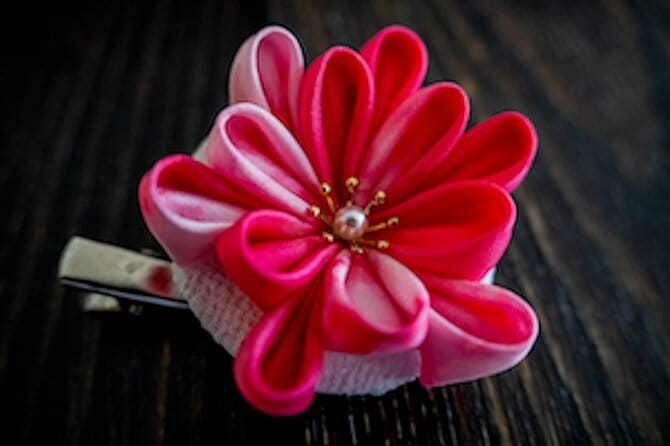
- In a Tsumami Zaiku class, participants learn the traditional Japanese art of creating delicate fabric flowers through meticulous folding and pinching techniques.
- Attendees use essential materials like silk, cotton, and organza, along with specialized tools like tweezers and scissors, to construct their own intricate floral designs.
- The class provides step-by-step guidance from a licensed instructor, offering insights into the history and cultural significance of this cherished craft.
- Participants will develop the patience, dexterity, and attention to detail required to master the Tsumami Zaiku technique during the hands-on class experience.
- Refreshments are provided to fuel the creative process as attendees enjoy the intricate and time-honored tradition of Japanese fabric flower-making.
What Is Tsumami Zaiku?
Tsumami Zaiku is a traditional Japanese fabric flower-making art that creates delicate fabric flowers from folded and pinched fabric squares.
The technique involves precisely folding and pinching small fabric pieces to form intricate petals. Each petal is carefully shaped and arranged to form a beautiful flower.
Tsumami Zaiku flowers are often used in traditional Japanese clothing, accessories, and decorations. The art requires patience, dexterity, and an eye for detail to produce the intricate and visually stunning fabric flowers.
Mastering Tsumami Zaiku takes time and practice, but the resulting flowers are true works of art.
Here are more great tours and experiences we've reviewed in Tokyo
The History of Tsumami Zaiku
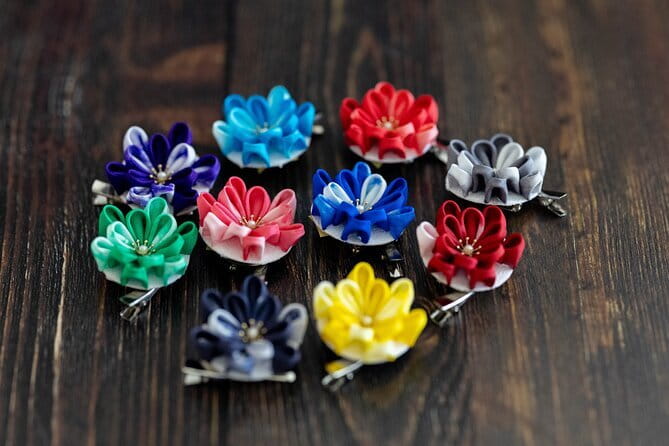
The origins of this unique Japanese fabric art can be traced back centuries, with its roots firmly established during the Edo period (1603-1868).
Tsumami zaiku, the intricate folding and pleating of fabrics to create delicate flowers and ornaments, has been a cherished tradition in Japan for generations.
The history of tsumami zaiku is marked by three key milestones:
-
The development of specialized techniques and tools during the Edo period, enabling the art form to flourish.
-
The incorporation of tsumami zaiku into the kimono-making process, elevating its cultural significance.
-
The modern revival and preservation of this artisanal craft, ensuring its legacy continues.
Materials and Tools for Tsumami Zaiku

Essential to the practice of tsumami zaiku are the specialized materials and tools used to create these delicate fabric flowers.
Tsumami zaiku artists employ delicate tweezers, sharp scissors, and a variety of fabrics like silk, cotton, and organza. Fabric scraps are cut and pinched into intricate petal shapes. Glue is carefully applied to secure the petals, and a wire or stem is added to form the flower’s base.
Completing a single tsumami zaiku flower can require hours of meticulous, focused work. Mastering the technique takes time and patience, but the results are stunning miniature fabric blooms that capture the beauty of nature.
The Tsumami Zaiku Technique
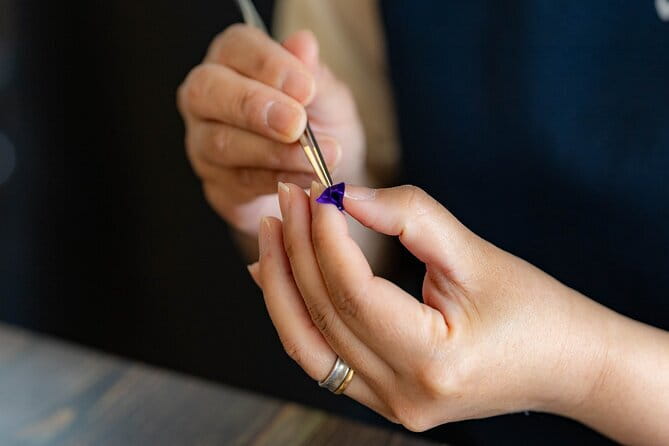
Engaging in the art of tsumami zaiku requires a delicate touch and a keen eye for detail. This intricate fabric flower-making technique involves precisely pinching and folding tiny cloth pieces to create stunning, three-dimensional blooms.
The process involves three key steps:
-
Selecting the fabric: Choosing the right material, such as silk or satin, is crucial for achieving the desired texture and pliability.
-
Folding and pleating: Using specialized tools, the fabric is meticulously folded, pleated, and manipulated to form the petals and other flower components.
-
Assembling the flower: The individual fabric pieces are carefully arranged and secured to construct the final, intricate floral design.
Designing Fabric Flowers
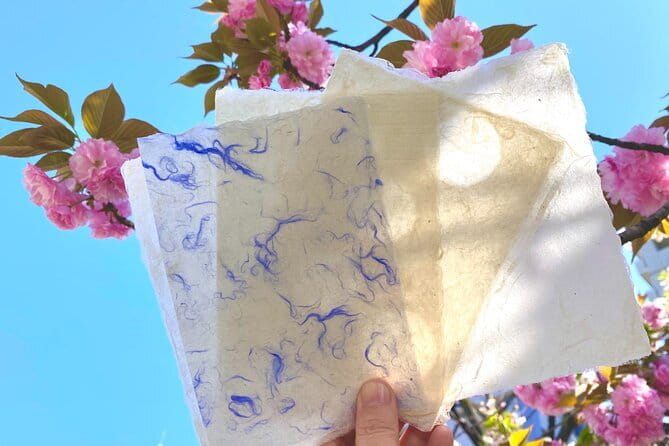
Although the tsumami zaiku technique requires a delicate touch, designers can use various approaches to create captivating fabric flowers. They may start with a simple petal shape and gradually build complexity, adding layers and textures.
Alternatively, they might begin with abstract forms and refine them into naturalistic blooms. Experimentation is key, as designers explore different materials, colors, and folding patterns.
The process often involves trial and error, but the satisfaction of crafting a unique, handmade flower makes it worthwhile. By honing their skills, designers can produce stunning tsumami zaiku creations that showcase the beauty of this traditional Japanese art form.
- English Driver 1-Way Haneda Airport To/From Tokyo 23 Wards
- From Tokyo: Private Sightseeing Tour to Mount Fuji & Hakone
- Mount Fuji Full Day Private Tour (English Speaking Driver)
- Tokyo: Full Day Private Walking Tour With a Guide
- Mt Fuji & Hakone: Sightseeing Private Day Tour With Guide
- Tokyo City Customized Tour With English Speaking Guide
The Class Experience
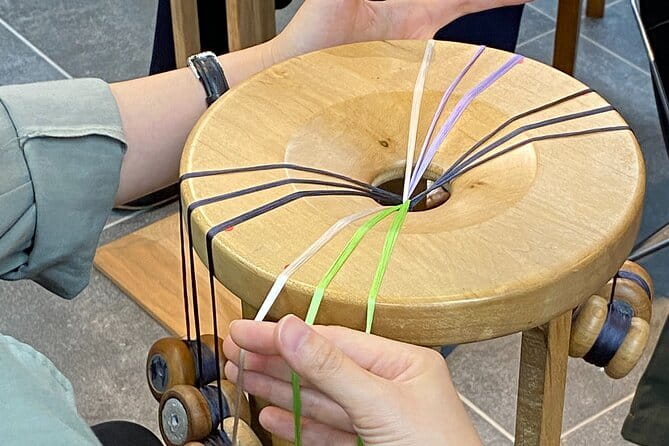
During the Tsumami Zaiku class, participants don an apron and gloves before diving into the intricate world of traditional Japanese fabric flower-making.
The class is led by a licensed guide who provides step-by-step instructions and demonstrations. Participants will learn:
- How to carefully pleat and pinch the fabric to create intricate flower petals.
- Techniques for assembling the petals into beautiful blooms.
- The history and cultural significance of this time-honored craft.
Throughout the class, participants are provided with bottled water and snacks to fuel their creativity.
The experience culminates back at the meeting point.
Takeaways and Souvenirs
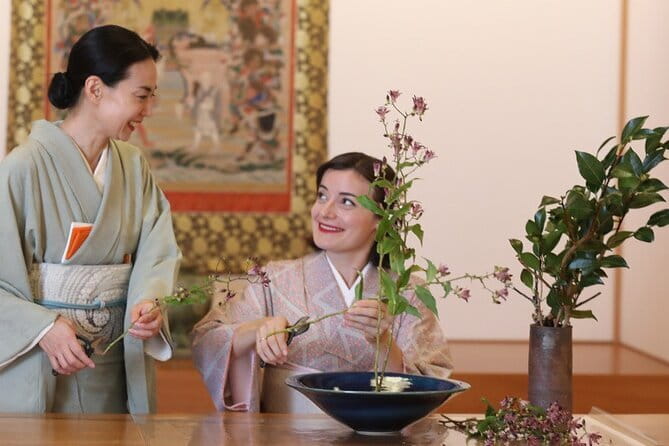
At the end of the Tsumami Zaiku class, participants leave with a unique handmade fabric flower creation and a newfound appreciation for this traditional Japanese art form.
They’ll have learned the intricate techniques of folding, pleating, and shaping the delicate fabrics into beautiful blossoms. The finished flower can be used as a hair accessory, brooch, or decorative piece, serving as a lasting memento of the experience.
Beyond the physical takeaway, participants gain insights into Japanese culture and craftsmanship, fostering a deeper connection to this time-honored practice.
The Tsumami Zaiku class offers a memorable and fulfilling creative experience.
Why Experience Tsumami Zaiku in Tokyo?
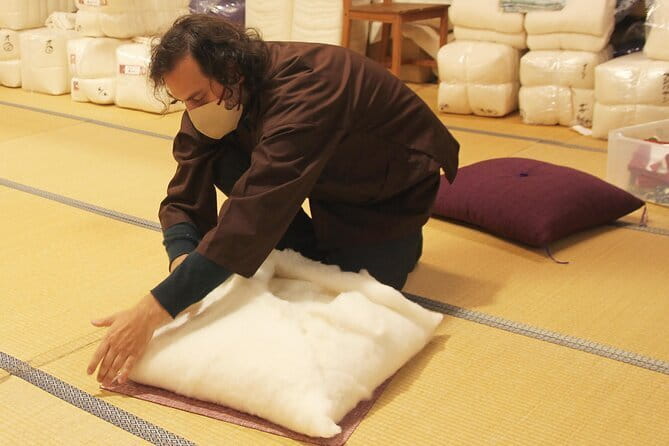
Experiencing the art of Tsumami Zaiku in Tokyo allows visitors to enjoy a centuries-old Japanese craft that captivates with its intricate beauty.
This class offers a unique opportunity to:
- Learn the traditional techniques of fabric flower-making from a licensed guide.
- Create a personalized piece of Tsumami Zaiku art to take home as a memorable souvenir.
- Appreciate the precision, patience, and artistry required to produce these delicate fabric flowers.
Tsumami Zaiku’s timeless appeal and the vibrant energy of Tokyo make this class a must-do activity for those seeking an authentic cultural experience.
Frequently Asked Questions
How Long Does the Class Typically Last?
The class typically lasts around 2-3 hours. The exact duration is not specified, but the included amenities and meeting/end points suggest the experience is designed to be a half-day activity for participants.
Can I Bring My Own Materials to the Class?
The class does not allow participants to bring their own materials. All necessary supplies, including an apron and gloves, are provided as part of the included amenities for the 2-3 hour experience.
Do I Need Prior Experience in Fabric Crafting?
No prior experience in fabric crafting is required for this class. The instructor will provide all necessary materials and guide participants through the process of creating traditional Japanese fabric flowers, Tsumami Zaiku, step-by-step.
Is There a Dress Code or Attire Requirement for the Class?
The class doesn’t have a strict dress code, but participants should wear comfortable, casual clothing. Closed-toe shoes are recommended, and an apron will be provided to protect clothing during the hands-on activity.
Are There Any Age Restrictions for Participants?
The activity does not have any age restrictions. Travelers of all ages can participate in the class. However, younger participants may require parental supervision or assistance to complete the activities.
The Sum Up
Immersing oneself in the intricate art of Tsumami Zaiku offers a unique cultural experience. Under the guidance of a skilled instructor, you will explore the history and techniques of this cherished Japanese craft, creating delicate fabric flowers. With provided materials and refreshments, the class provides an opportunity to appreciate the beauty and tradition of this timeless art form. Attendees will leave with newfound insights and handcrafted souvenirs to commemorate their journey into the world of Tsumami Zaiku.
More Workshops & Classes in Tokyo
- Experience Big Soba Knife Soba Making Class in Tokyo Kappabashi
- Tokyo Original Shoes Making 1 Day Workshop / Ready Made Orders
- JDM Drift Car Driving Lesson Self Drive W/ Teacher Daikoku Ebisu
- Manga Lesson by Acitive Pro-Manga Artists (Tokyo/Shibuya)
- Tsukiji:Tokyo Omakase Sushi Class
- Tokyo: Manga Drawing Workshop Guided by Pro Manga Artist
More Tour Reviews in Tokyo
- Tokyo: Shinobi Samurai Premium EXP for Solo Travelers, 90min
- Mt Fuji Private Tour With English Speaking Driver
- Nerikiri Wagashi-Making With Tea Ceremony Review
- Tokyo 3-Hour Guided E-bike Cycling Tour of the Citys Hidden Gems
- Official Street Go-Kart Tour – Shinagawa Shop
- 【Open 1st Anniv.】Popular Sushi Making Class Near Tokyo Tower
Not for you? Here's more things to do in Tokyo we have recnetly reviewed
- 2 Best Craft Beer Tours And Tastings In Tokyo
- 20 Best 2 Day Tours In Tokyo
- 7 Best 3 Day Tours In Tokyo
- 6 Best 4 Day Tours In Tokyo
- 25 Best Cruises And Boat Tours In Tokyo
- 25 Best Food Tours In Tokyo
- 20 Best Full-Day Tours In Tokyo
- 15 Best Helicopter Flights And Tours In Tokyo
- 2 Best BBQ Experiences In Tokyo
- 5 Best Coffee Tours And Tastings In Tokyo
- 25 Best Lunch Experiences In Tokyo
- 12 Best Massage And Relaxation Services In Tokyo
